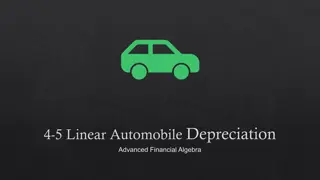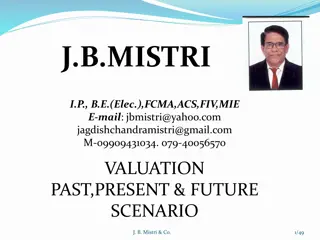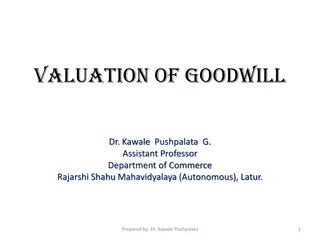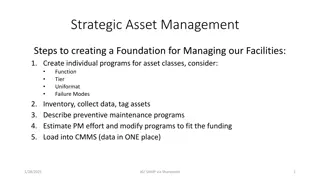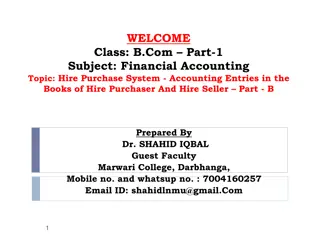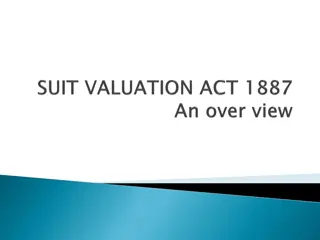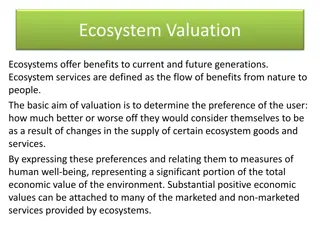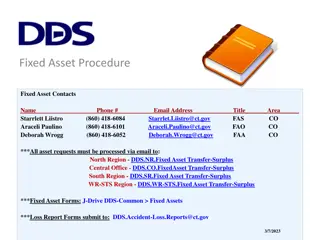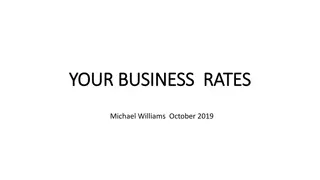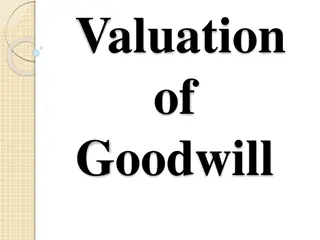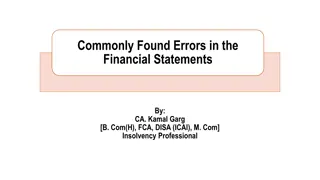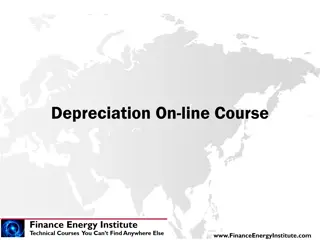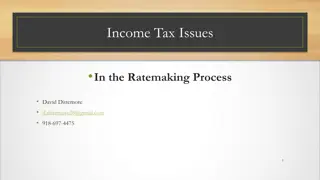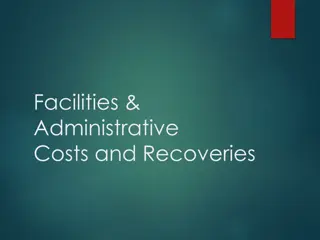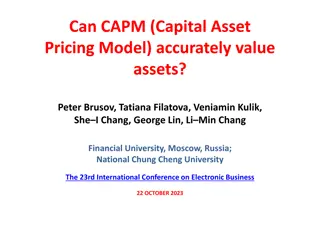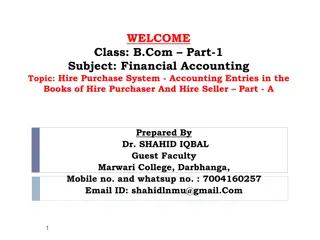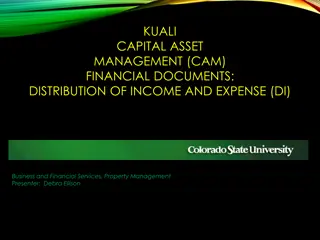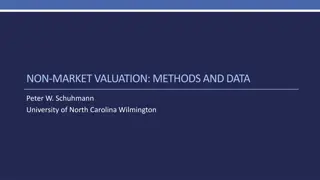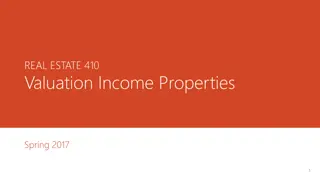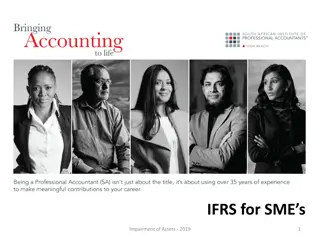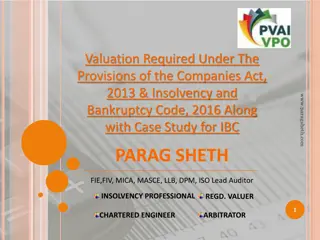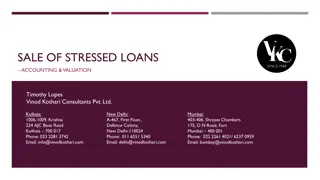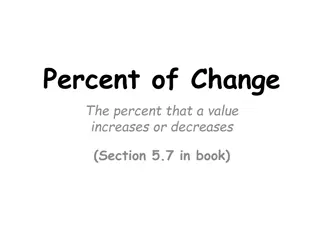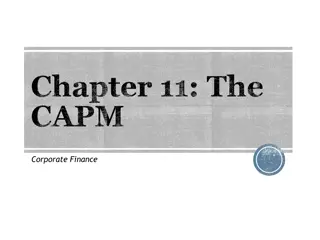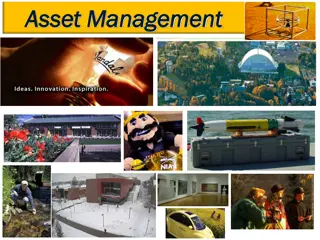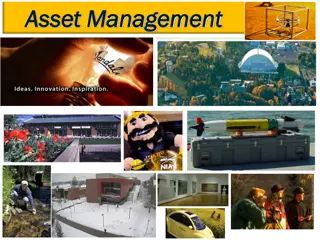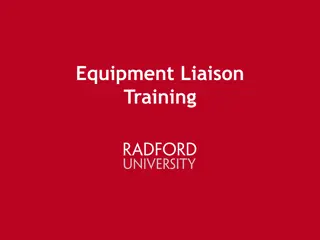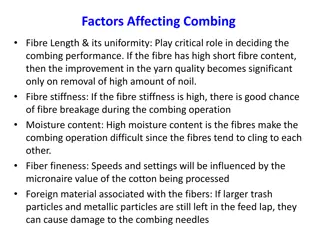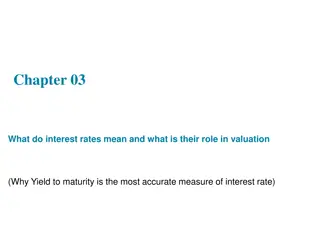Factors Affecting the Amount of Depreciation in Asset Valuation
Depreciation in asset valuation depends on the cost, estimated useful life, and probable salvage value. The cost of an asset includes various expenses incurred to put it in working condition. Estimated net residual value is the expected sale value of the asset at the end of its useful life after deducting disposal expenses. The depreciable cost is the cost of the asset less the net residual value, which is distributed as depreciation over its useful life. Useful life is the estimated economic or commercial life of the asset, not necessarily its physical life. Proper matching of depreciation to the depreciable cost is essential to ensure accurate accounting.
Download Presentation

Please find below an Image/Link to download the presentation.
The content on the website is provided AS IS for your information and personal use only. It may not be sold, licensed, or shared on other websites without obtaining consent from the author. Download presentation by click this link. If you encounter any issues during the download, it is possible that the publisher has removed the file from their server.
E N D
Presentation Transcript
FACTORS AFFECTING THE AMOUNT OF DEPRECIATION
FACTORS AFFECTING THE AMOUNT OF DEPRECIATION The determination of depreciation depends on three parameters, viz. cost, estimated useful life and probable salvage value. Cost of Asset Cost (also known as original cost or historical cost) of an asset includes invoice price and other costs, which are necessary to put the asset in use or working condition. Besides the purchase price, it includes freight and transportation cost, transit insurance, installation cost, registration cost, commission paid on purchase of asset add items such as software, etc. In case of purchase of a second hand asset it includes initial repair cost to put the asset in workable condition. According to Accounting Standand-6 of ICAI, cost of a fixed asset is the total cost spent in connection with its acquisition, installation and commissioning as well as for addition or improvement of the depreciable asset . For example, a photocopy machine is purchased for Rs.50,000 and Rs.5,000 is spent on its transportation and installation. In this case the original cost of the machine is Rs.55,000 (i.e. Rs.50,000 + Rs.5,000 ) which will be written-off as depreciation over the useful life of the machine.
FACTORS AFFECTING THE AMOUNT OF DEPRECIATION Estimated Net Residual Value Net Residual value (also known as scrap value or salvage value for accounting purpose) is the estimated net realisable value (or sale value) of the asset at the end of its useful life. The net residual value is calculated after deducting the expenses necessary for the disposal of the asset. For example, a machine is purchased for Rs.50,000 and is expected to have a useful life of 10 years. At the end of 10th year it is expected to have a sale value of Rs.6,000 but expenses related to its disposal are estimated at Rs.1,000. Then its net residual value shall be Rs. 5,000 (i.e. Rs.6,000 Rs.1,000). Depreciable Cost Depreciable cost of an asset is equal to its cost less net residual value. Hence, in the above example, the depreciable cost of machine is Rs.45,000 (i.e., Rs.50,000 Rs.5,000.) It is the depreciable cost, which is distributed and charged as depreciation expense over the estimated useful life of the asset. In the above example, Rs.45,000 shall be charged as depreciation over a period of 10 years. It is important to mention here that total amount of depreciation charged over the useful life of the asset must be equal to the depreciable cost. If total amount of depreciation charged is less than the depreciable cost then the capital expenditure is under recovered. It violates the principle of proper matching of revenue and expense
FACTORS AFFECTING THE AMOUNT OF DEPRECIATION Estimated Useful Life Useful life of an asset is the estimated economic or commercial life of the asset. Physical life is not important for this purpose because an asset may still exist physically but may not be capable of commercially viable production. For example, a machine is purchased and it is estimated that it can be used in production process for 5 years. After 5 years the machine may still be in good physical condition but can t be used for production profitably, i.e., if it is still used the cost of production may be very high. Therefore, the useful life of the machine is considered as 5 years irrespective of its physical life. Estimation of useful life of an asset is difficult as it depends upon several factors such as usage level of asset, maintenance of the asset, technological changes, market changes, etc. As per Accounting Standard 6 useful life of an asset is normally the period over which it is expected to be used by the enterprise .
Normally, useful life is shorter than the physical life. The useful life of an asset is expressed in number of years but it can also be expressed in other units, e.g., number of units of output (as in case of mines) or number of working hours. Useful life depends upon the following factors : Pre-determined by legal or contractual limits, e.g., in case of leasehold asset, the useful life is the period of lease. The number of shifts for which asset is to be used. Repair and maintenance policy of the business organisation. Technological obsolescence. Innovation/improvement in production method. Legal or other restrictions.


